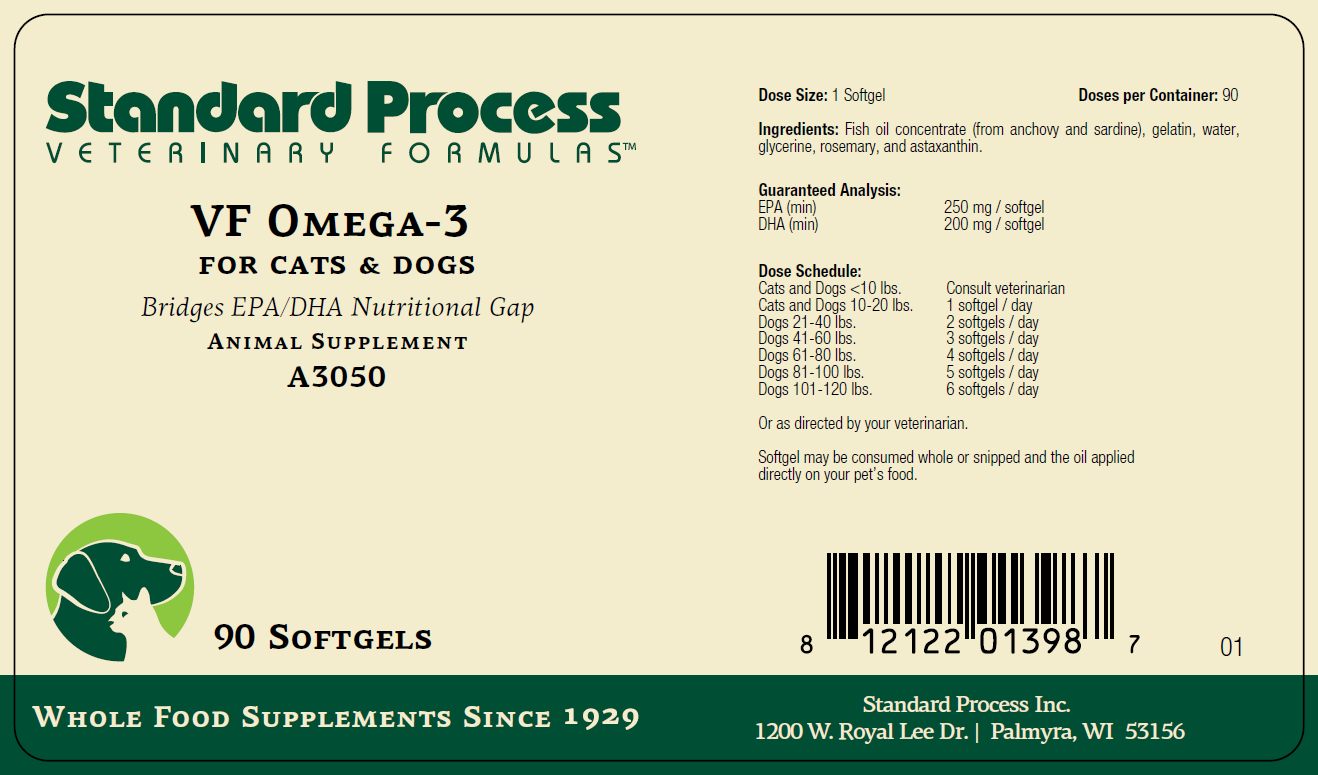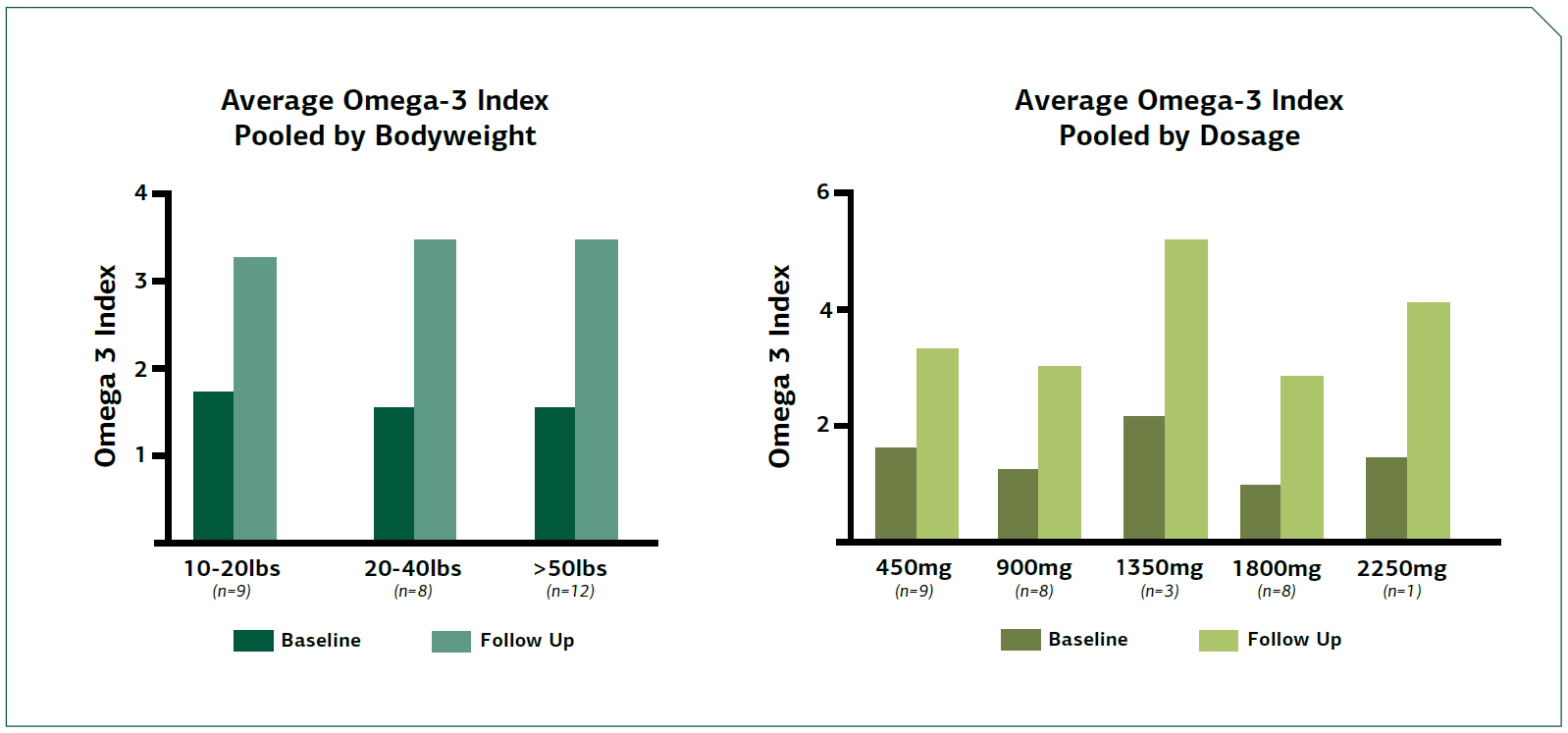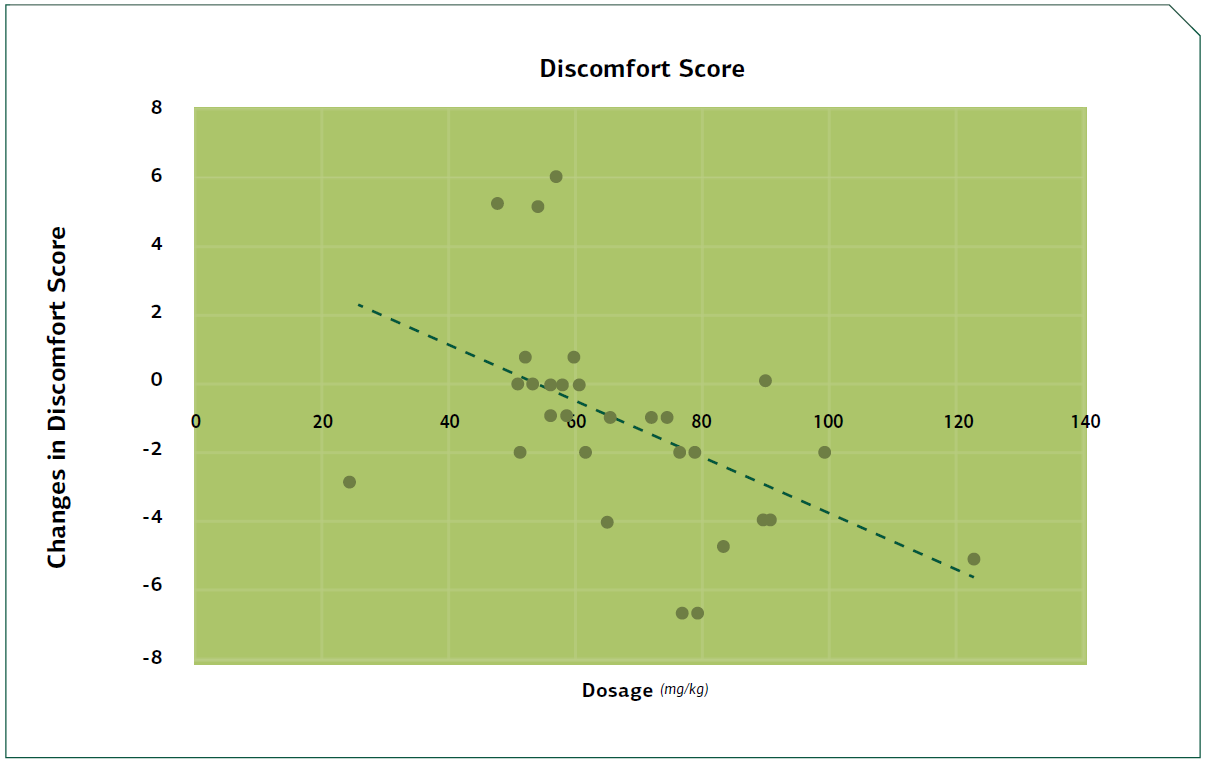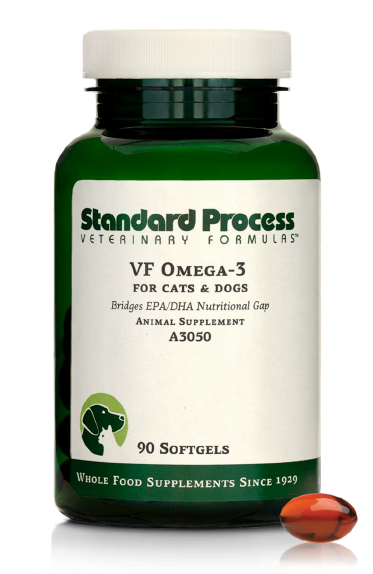 Web Content Viewer
Web Content Viewer
Clinical Study - Impacts of Omega-3s on Canine Coat and Body Discomfort
Published on 7/19/23

Veterinary Formula (VF) Omega-3 impacts dog’s coat, body’s discomfort, and omega-3 fatty acids: summary of a clinical study.
Written by: Carolina Carlisle, MPH, PhD, Clinical Research Scientist
Reviewed and edited by the Standard Process Science Review Team:
Brandon Metzger, PhD, Director of Technical and Product Development
Meghan Hamrock, MS, MPH, Nutrition Learning Manager
Charles Wagner, PhD, Nutrition Scientist
POLYUNSATURATED FATTY ACIDS (PUFAS)
Polyunsaturated fatty acids (PUFAs) are categorized as omega-3s and omega-6s. The essential omega-3 fatty acids consist of eicosapentaenoic acid (EPA), docosahexaenoic acid (DHA), and alpha-linolenic acid (ALA). Like humans, animals cannot sufficiently convert ALA into EPA and DHA. Therefore, it is essential to obtain EPA and DHA from the diet. EPA and DHA have been linked to health benefits.
Canine diets tend to be higher in omega-6s than omega-3s because of the increased consumption of pet foods and diets that contain grains, farm-raised fish, and vegetable oils. This creates an imbalanced ratio and the need for omega-3 supplementation.

SOURCE MATTERS
In a study in dogs1, results showed that supplementation with ALA from plant-based flax oil, did not improve omega-3 PUFA blood concentrations. Only the supplementation with a direct source (such as marine) of omega-3 PUFAs resulted in a significantly increased long chain omega-3 omega-3 fatty acids, EPA and DHA. This is because the conversion process is inefficient in dogs. Therefore, finding alternative sources of omega-3 PUFAs, such as marine oils, is key. This means sources that are rich in long chain omega-3 fatty acids (EPA and DHA) and require no conversion from short-chain PUFAs -- a conversion that is very inefficient in dogs, and virtually non-existent in cats.
STUDY SUMMARY
In this clinical study, 29 dogs (ages 3 to 14 years old) consumed Standard Process VF Omega-3, daily, for 16 weeks. The doses for each dog varied by weight (50-99 mg EPA+DHA/kg/day). The dogs in the study had their omega-3 status assessed before and after the supplement intake using the Omega-3 Index (O3I) for Pets. O3I is a blood test, which measures EPA and DHA specifically in red blood cells, and it was administered by a veterinarian. The recommended omega-3 index target range is 3-8%.

Figure 1 & 2. Results from the O3I Test kit for dogs, reported that at baseline, most of the dogs (93%) hand a low O3I (group average O3I = 1.4%). After consuming VF Omega-3 for 16 weeks, there was significant improvement of the average of the dogs' O3I by more than 100% (P<.001).
THE BENEFITS OF BALANCED FATS
Lowering the omega-6 to omega-3 ratio by improving the dietary intake of omega-3 PUFAs has been shown to have many benefits in dogs. Specifically, optimal omega-3 PUFAs in dogs has been shown to improve the immune system response, support joint health, and support healthy skin and coat.
STUDY RESULTS
Results from this clinical study demonstrated that consuming VF Omega-3 for 16 weeks significantly improved discomfort score (P=.04). This effect was magnified at dosages ≥59 mg/kg (P<.001) (Figure 3). The results were measured by a validated questionnaire that was designed to assess dogs’ discomfort. The questionnaire was filled out by the dogs' owners on a 0-4 scale. The questionnaire took into consideration the dogs' attitude/mood, willingness to play/interact, and behavior indicative of discomfort (such as whining) among others.

Figure 3: Change in discomfort score versus dosage (mg/kg); negative values indicate a decrease in discomfort.
The results of this study also pointed to an improvement in a dog's coat by showing a correlation between an increased omega-3 index and hair/coat quality. (P=.04). Data on file.
- 62% of the dogs statistically improved their Discomfort Score from start to finish (change number was negative, went down, "less discomfort") (P=0.04).
- Conclusion: After consuming VF Omega-3 for 16 weeks, there was a significant improvement of the average dog's omega-3 index levels by more than 100% (P<.001) [Figures 1 and 2 - light bars].
VF Omega-3 for Cats & Dogs is formulated to deliver 450 milligrams of EPA and DHA from sardines and anchovies in each softgel. This product can be paired with the Omega-3 Index for Pets Test Kit to help assess omega 3 status and optimize omega- 3 status.
 It is designed to bridge the nutritional gap and help support:
It is designed to bridge the nutritional gap and help support:
- Overall health and quality of life
- A healthy ratio of omega-6 to omega-3 fatty acids
- The pathways that regulate joint health and comfort
- Heart health
- Canine healthy skin and coat
- The central nervous system
- Brain development of puppies and kittens
For more information about the study, please visit standardprocess.com/vf-omega-3
